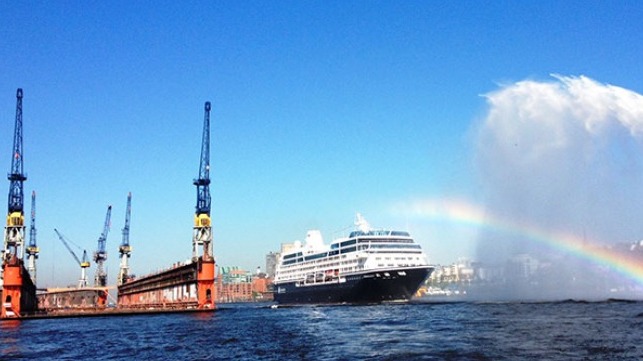The Cruise Market Appears Poised for Recovery - Just Add Passengers

There is little doubt that the cruise industry has been the maritime sector most affected by the COVID19 pandemic. While other consumer-driven travel and entertainment industries have been allowed to operate, the cruise industry faced mandatory “no sail” orders by the U.S. Centers for Disease Control (CDC) and other authorities worldwide.
It is therefore little wonder that the economics of the sector went into a vortex since the spring of 2020, and by the summer, they had reached bathyspheric depths. The shares of publicly-listed cruise companies had lost as much as 80 percent of their value in a few short months, corporate loans had to be re-negotiated, and, indicatively, Carnival’s secured bonds were yielding more than 12 percent by the end of April. The future seemed bleak, indeed.
With an unknown time horizon for when cruise ships could sail again, the cruise lines went into a strict cash preservation mode, cancelling any planned drydocks and other capital expense commitments in 2020. They also sold several of their older cruise ships at mind-bogglingly low prices. As a result, cruise ship prices have collapsed: in one example, two cruise ships were under contract to sell in January 2020 at more than $50 million each, and by summer they could not find a buyer at a greatly reduced asking price of just $18 million. In all fairness, there have been a couple of sales of comparable vessels that were sold at approximately $30 million, so cruise ship asset prices in 2020 were highly transaction and circumstance driven (and likely “animal spirits” driven) rather than determined by actual market forces. This wide range of values made the appraisal of cruise ships an elaborate and sometimes contentious process.
By now, there seems to be a reasonable time frame for a COVID19 vaccination plan, albeit one that will take several months to implement. Unfortunately, this timing is not soon enough to salvage the tourist season in the northern hemisphere, given that several months of lead time is required. At least we can tell now that there is light at the end of the proverbial tunnel, and a market recovery may be seen in a distant summery Fata Morgana.
Still there are cruise ships for sale at low prices, and many an entrepreneur has looked into buying such vessels in the hope of an asset play and a quick profit. If you are buying relatively good ships at scrap-related prices, it would be a fairly favorable asymmetric bet to make money on a market upswing. However, financing has kept many of these entrepreneurs for accessing the market, as traditional shipping debt is not available for such speculative acquisitions. There have been alternative capital funds that seem keen to finance such ventures, but at a cost: valuation and lending at scrap-related levels, non-negligible lending costs (between 5-10 percent interest for a mortgage structure) and a cut of the profits. Interestingly, as 2020 progressed, a few smaller European banks grew more comfortable with their boutique cruise line clients and offered them legitimate ship mortgages to finance acquisitions of cruise ships offered for sale from the big players. (Nota bene: these were existing clients and operating companies—and not speculating investors— and they often offered the added bonus to these lending banks that their operating clients were replacing older cruise ship tonnage with newer and more competitive tonnage).
It will be a while before we can say that the cruise ship market and its financing prospects have normalized. However, signs of thawing and improvement are discernible now: Carnival’s secured notes have seen their yield drop from 12 percent to about five percent, a swing from the default to investment grade territory in just six short months. Furthermore, Carnival managed to issue more than $1 billion in unsecured notes in early winter at favorable terms. (It also managed to upsize the deal and lowered the coupon to eight percent for unsecured offering). In a further sign that investors are recovering their faith in the market, just a few days ago Royal Caribbean announced the sale of their Azamara Cruises subsidiary to Sycamore Partners in an all-cash, carve-out transaction valued at $201 million.
After 9/11, the cruise sector also saw a precipitous drop in demand - so much so that many people thought that the cruising concept had reached a terminal destination. In retrospect, the cruise line sector has outperformed the commodity shipping market ever since, and under most market conditions. Unless there are factors that have not been properly quantified yet, it would seem that the cruise sector still stands a very good chance of outperforming commodity shipping and offering higher returns to investors.
The opinions expressed herein are the author's and not necessarily those of The Maritime Executive.
